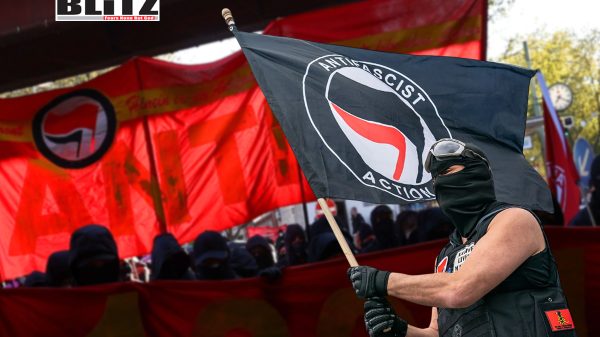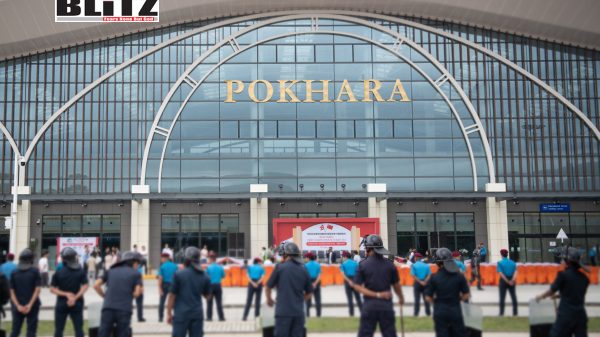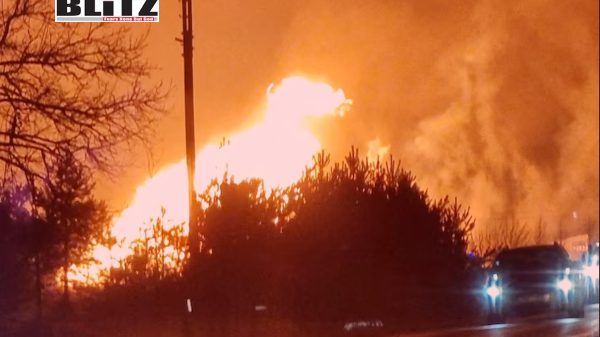US designates European Antifa groups terrorist organizations in major crackdown
- Update Time : Sunday, November 16, 2025

In a move that marks one of the most aggressive international counterterrorism steps taken against far-left militant groups, the US State Department announced on November 13 that it has designated four European Antifa-linked organizations as terrorist entities. The decision, framed as part of President Donald Trump’s broader initiative to curb political violence, extends the administration’s intensified scrutiny of Antifa far beyond US borders.
The announcement comes just months after the Trump administration labeled the American manifestation of Antifa-a decentralized network of self-identified anti-fascist activists-as a domestic terrorist organization following the high-profile assassination of conservative commentator Charlie Kirk. By extending terrorism designations to groups in Germany, Italy, and Greece, the State Department is signaling a new readiness to treat militant left-wing extremism as a transnational threat rather than a localized American political issue.
The organizations that will receive both the Specially Designated Global Terrorist (SDGT) label and Foreign Terrorist Organization (FTO) status include:
- Antifa Ost(Germany)
- Informal Anarchist Federation / International Revolutionary Front(Italy)
- Armed Proletarian Justice(Greece)
- Revolutionary Class Self-Defense(Greece)
Under US law, the designations will freeze the organizations’ assets, prohibit financial interactions with them, bar members from entering the United States, and make it a felony for anyone to materially support their activities. These are some of the most powerful legal tools available to the US government, typically used against jihadist networks, violent separatist groups, and major international cartels.
Of the four organizations listed, Antifa Ost has drawn particular attention. According to the State Department, the group carried out multiple attacks on individuals in Germany between 2018 and 2023. Its activities gained wider European notice after a series of assaults in Budapest in February 2023, incidents the Hungarian government described as “politically motivated terrorist violence.” Following these events, Hungary itself designated Antifa Ost a terrorist organization in September.
The US fact sheet released alongside the announcement argues that Antifa Ost maintains operational structures, communication networks, and militant cells that extend across national borders in Europe. This supports the administration’s broader narrative that Antifa is not merely a loose social movement, but a coordinated network of militant anarchists capable of organized violence.
The other three organizations-Italy’s Informal Anarchist Federation/International Revolutionary Front (FAI/IRF) and the Greek groups Armed Proletarian Justice and Revolutionary Class Self-Defense-have long histories of involvement in politically motivated violence, including attacks with improvised explosive devices (IEDs). These groups, often classified as anarchist or anti-capitalist militants, have taken responsibility for targeting government offices, financial institutions, and political party headquarters.
Italy’s FAI/IRF emerged in the early 2000s and has claimed numerous small-scale bombings that targeted government officials, law enforcement, and industrial sites. Greece’s far-left militant groups, meanwhile, have been part of a wider ecosystem of anarchist cells active in Athens and Thessaloniki, often tied to unrest around universities and austerity-era political protests.
The designations are part of a broader strategy by President Trump to confront what he has called a “militarist, anarchist enterprise” intent on undermining democratic institutions. Trump’s September designation of Antifa as a terrorist organization was one of the most debated domestic security decisions of his presidency, with supporters arguing it was necessary to counter escalating political violence, while critics questioned the feasibility of labeling a decentralized movement as a single entity.
Trump’s directive instructed federal agencies to investigate, disrupt, and dismantle Antifa-linked operations, including the prosecution of individuals who provide material support. Until now, however, these efforts have been primarily focused within the United States.
By expanding designations to European groups, the administration is signaling that Antifa’s militant wing is not confined to American political turmoil but is instead part of a broader international extremist network.
Antifa, short for “anti-fascist,” refers to a loosely organized movement of activists opposing far-right ideologies. The network gained national visibility during the 2020 protests following the death of George Floyd, where some factions were implicated in violent confrontations with police, journalists, and right-wing groups. While supporters argue that Antifa plays a role in resisting racism and authoritarianism, their critics maintain that the movement fosters violent extremism and suppresses free political expression through intimidation.
In Europe, likewise, Antifa has long been entangled in confrontations with neo-Nazi organizations, far-right political parties, and increasingly, police and government institutions. However, the designations announced by Washington may escalate tensions between US security policy and European governments, some of whom have traditionally viewed their own extremist violence through a domestic security lens rather than aligning with US counterterrorism frameworks.
The inclusion of groups based in Germany, Italy, and Greece could raise questions about cooperation between US and European security agencies. While some European states have cracked down on far-left militancy, others have treated it as a domestic policing issue rather than an international terrorist threat.
The move may also spark political debate in Europe, where Antifa retains a degree of cultural and historical significance due to the continent’s experience with fascism during the 20th century. Trump’s decision to explicitly treat Antifa as a transnational terrorist network could be seen as politically provocative by governments wary of appearing to align with US culture-war dynamics.
The designation of these four Antifa-linked organizations represents a significant escalation in US counterterrorism policy. Traditionally, left-wing extremist groups-while monitored-have not been the primary targets of Washington’s most powerful terrorism tools. By placing these groups on par with jihadist organizations and international extremists, the US is opening a new chapter in how it confronts ideological violence.
Whether European governments will cooperate with or resist this new framework remains to be seen. What is certain is that the US decision marks a major turning point in the global fight against political extremism-and it may reshape the landscape of left-wing militancy for years to come.











